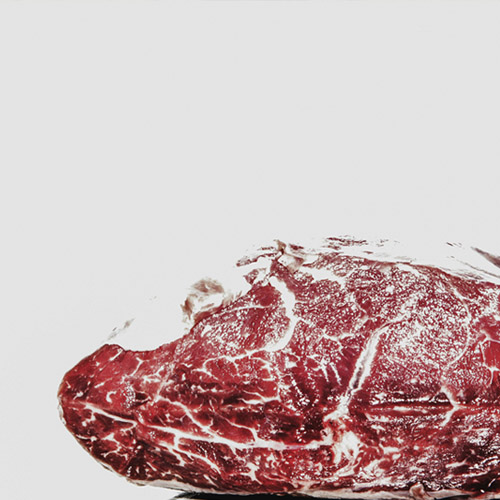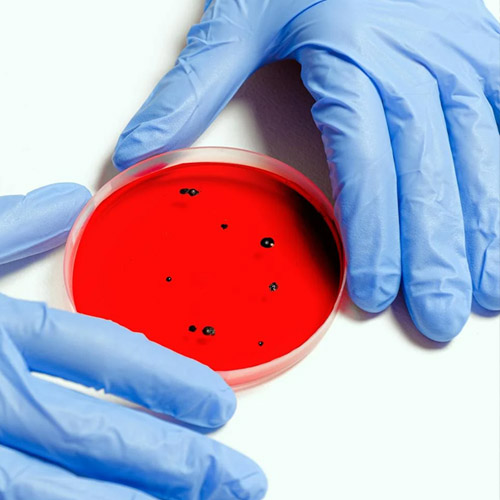SAFETY CONCERNS SHADOW SYTHETIC MEAT'S GLOBAL EXPANSION
SAFETY CONCERNS SHADOW SYTHETIC MEAT'S GLOBAL EXPANSION

From the effects of climate change, deforestation, animal cruelty and water conservation, synthetic meat seemed to be a long-term solution for many environmentalists. And for those who aren’t vegetarian or vegan, or just can’t kick the habit, we could ostensibly have our meat and eat it too. But as synthetic meat continues its push into mainstream acceptance, new safety concerns are raising questions about the long-term health implications of this rather new food technology. While proponents continue to tout its environmental benefits, recent expert weigh-in on what regulators are still working to understand.
The Purpose of Synthetic Meat?
The livestock industry continues to be one of the largest contributors to environment saftey.
- Climate Change: Traditional livestock farming produces approximately 14.5% of global greenhouse gas emissions, particularly methane from cattle
- Land Use: Animal agriculture uses about 77% of agricultural land while providing only 18% of calories consumed globally
- Water Consumption: Producing 1 kilogram of beef requires approximately 15,000-20,000 liters of water
- Deforestation: Cattle ranching is a leading cause of Amazon rainforest destruction
Animal Welfare
- Eliminates the need to slaughter animals for meat production
- Reduces animal suffering associated with factory farming conditions
- Addresses ethical concerns about industrial animal agriculture
- Potentially allows meat production from a single biopsy without harming the animal
Food Security and Efficiency
- Resource Efficiency: Cultured meat could theoretically use 96% less land, 96% less water, and produce 96% fewer greenhouse gases than conventional meat
- Global Food Demand: With global population expected to reach 9.7 billion by 2050, traditional meat production may not be sustainable at required scales
- Pandemic Resilience: Reduces risks associated with zoonotic diseases that can jump from animals to humans
Health Considerations
- Potential to eliminate foodborne pathogens like Salmonella and E. coli that commonly contaminate conventional meat
- Could reduce the need for antibiotics used in livestock farming, helping address antibiotic resistance
- Ability to control nutritional content more precisely
Economic Opportunities
- Creates new technological industries and job markets
- Reduces dependence on traditional agricultural land and climate conditions
- Potential for more consistent pricing and supply chains
Technological Innovation
The development represents a convergence of several scientific fields including tissue engineering, cellular biology, and bioengineering, building on decades of research in regenerative medicine.
The concept essentially emerged from the recognition that we could potentially produce real animal tissue without raising and slaughtering entire animals, addressing multiple global challenges simultaneously through biotechnology innovation.
A comprehensive review by Food and Agriculture Organization of the United Nations (FAO) the World Health Organization (WHO) experts has identified 53 potential health hazards associated with cultured meat production, particularly focusing on the industry's unique safety challenges. Unlike traditional meat safety concerns, which primarily focused on bacterial contamination, synthetic meat faces different risks stemming from its laboratory-based production methods.
Chief among these concerns are contamination risks from growth media, particularly the historical use of fetal bovine serum, which experts warn could expose products to viruses or infectious prions. Perhaps more troubling are questions about the genetically-modified cell lines used in production, with some researchers expressing concern that these could exhibit characteristics similar to cancerous cells.
"These genetically-modified cell lines could exhibit the characteristics of a cancerous cell," noted safety researchers in their most recent assessments. This sentiment remains a concern amoug some reluctant consumers.
Singapore become the first country to approve cultured meat for commercial use when it greenlit California-based Eat Just's bite-sized chicken products in 2020 giving the city-nation five years of real-world consumer data. But despite being the first nation to approve "fake meat", skeptism remains high. According to a YouGov poll, only 31% of Sigaporians say they would be willing to try synhtetic meat - and 73% say they're worried about side-effects.
The United States followed much later, approving synthetic chicken and beef products in June 2023 – a full two and a half years after Singapore's breakthrough decision. As of early 2025, Upside Foods and Good Meat are the only companies authorized by the USDA to sell their cultivated chicken products. However, a few states, such as Alabama, Florida, and Texas, have recently passed laws banning or restricting the sale of synthetic meat. Alabama and Florida imposed the ban before the product was even sold to consumers.
Israel joined the approved nations in January 2024, while the Netherlands became the first European Union member to allow taste testing of cultured products in July 2023 – although full market approval remains pending. Australia and New Zealand are currently jointly assessing cultured quail products for commercial use.
Despite synthetic meat being banned in certain US states, 43 states currently allow cunsumers to buy it. It's also noteworthey that the seven states that ban synthetic meat were states that overwheminly supported the Republican political party.
However, the technology faces significant resistance in Europe, where a coalition of 13 countries, led by Austria, France, and Italy, argues that synthetic meat threatens "genuine food production methods" and poses potential risks to economy, public health, and traditional farming.

Saftey Measures
Complete safety measures remain incomplete due to limited long-term consumption data. While no documented adverse effects have been reported from approved synthetic meat products, the technology's commercial infancy means comprehensive studies are still years away. While traditional meat safety risks like Salmonella and E. coli contamination may be reduced, new risks unique to cellular agriculture are still being evaluated.
With synthetic meat poised for broader expansion, the coming years will prove crucial in determining whether early safety concerns materialize into real health risks or fade as production methods mature and safety protocols evolve.
Note: It took more than 150 years for tobacco to be universally embraced by the general public as a health concern – although the motivations for cultivating tobacco were far different than synthetic meat. However, thus far, no major health concerns have arisen from consuming synthetic foods over the last five years - but much more data is needed to determine the long-term effects of consuption.
Related News .
Stay updated with the most important events.





